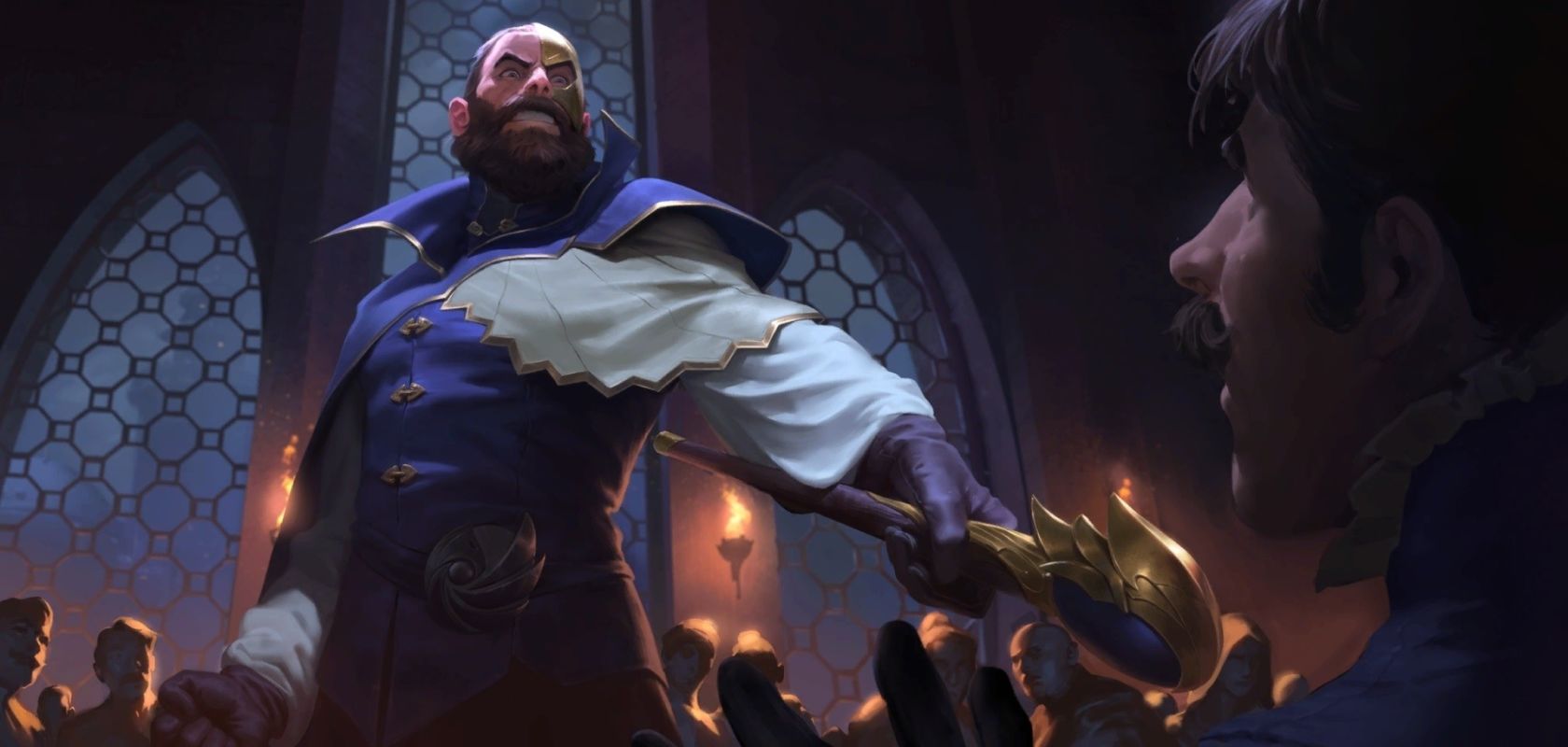Legends of Runeterra is Riot Games’ entry into the Online Trading Card Game Market. Hosted within the same universe as League of Legends, Riot Games brings forth iconic characters from their massively successful game to populate Legends of Runeterra. However, as the online trading card market is already heavily saturated with other titles, LoR’s take on the genre will have to push it above and beyond its competitors.
Legends of Runeterra, like many other card games allows players to play one another with prepared decks in their arsenal. Each deck can be built to include up to two different “regions” with a total of 6 to choose from. Regions in LoR contain a set of unique cards built around a group of different gameplay features. For example, Ionia contains cards that allow the player to Recall a unit, forcing it to return to the players hand. Combining two regions allows for more powerful combos to be achieved, resulting in a diversification of strategy and more overall freedom.
There are three types of cards in Legends of Runeterra: units - which are cards that have power and health, and can be placed on the field to battle, spells - which are cards that can be cast to turn the tides of battle into your favour, and finally champions. Champions are special units drawn straight from the League of Legends universe: this is where you can find many of LoL’s iconic faces. League of Legends players would be happy to see familiar characters like Lux, Garen, Zed, Yasuo, Darius and many more making appearances, each with their own distinct style. Champions also have the ability to level up, granting them stronger powers that influence the fight even more.
For example, Yasuo has a unique ability that allows him to strike an enemy for 2 damage when you Stun or Recall it. Throughout the game, if you’re able to Stun or Recall 6 or more units successfully using spells or other units, Yasuo will level up granting him more additional power and health as well as a new ability. Now Yasuo will strike an enemy for his current power (in normal cases 5) whenever it has been Stunned or Recalled. However, if you buff Yasuo’s power using a card such as Stand Alone, he will strike for more damage.
Champions in Legends of Runeterra allow for certain decks and strategies to be built around them, as their powerful abilities can make or break a game.
Unlike other card games, Legends of Runeterra has an interesting turn system that allows for a more adaptive and reactive sort of play. Instead of players taking turns where they can play as many cards as they’d like until they use up their resources for the turn, LoR implements a round system, where each person is able to play one card before it moves to the next player. For example, if Player 1 places a unit, Player 2 will then have the opportunity to place a unit resulting in a back and forth type of game. However, one issue this introduces is that matches can be infuriatingly slow when your opponent takes a century and a half to play a card.
Overall the game feels well balanced with nothing too blatantly overpowered. Riot is patching the game consistently with balanced updates as needed to shake up the meta. It’s good for casual players while also having a good amount of depth to it. It’s always interesting to see what sort of card combinations you can come up with and tinker to make an optimal deck. Some cards feel pretty frustrating to play against, especially those from the Shadow Isles - a region that revolves around cheesing your opponent by killing off your own units to summon stronger ones.
One of the best aspects about Legends of Runeterra is its progression system. Unlike other digital trading card games, Legends of Runeterra does reqquire the player to spend money to win, which is a common these days. Instead, Riot introduced a system in which players can select one of the 6 different regions to level up and gain cards for. Players can swap between each region at any time so you’re free to keep expanding your collection. Progression feels nicely paced, with a new capsule or chest every day or so and there’s a chance that each time you get cards they can upgrade into cards of higher rarity etc. It should be stated that LoR does contain some amount of paid progression, where players can use real life money to purchase champions they can place into their decks, however this doesn’t have a direct effect on gameplay.
Legends of Runeterra is a surprising game to come from Riot, considering its brief tease before it was launched straight into its closed beta. It’s definitely a fun game that I would recommend if you either enjoy card games with a potential for a lot of depth, or if you like League of Legends and enjoy its characters. There’s a lot of gusto and lore placed around the game with special card interactions as well as new characters being introduced.
The future of LoR is looking bright. Riot seems to be keen on keeping the game afloat as well as supporting it through its future. It’s probable that new cards and regions will be added in as well as more game modes aside from just the 1v1 duel against an opponent. It’s definitely a game that you’d want to look out for as Riot continues to implement and iterate on it.
If you want to learn more about LoR I’d definitely recommend checking out the Youtuber Swim who has been playing since the closed beta.

